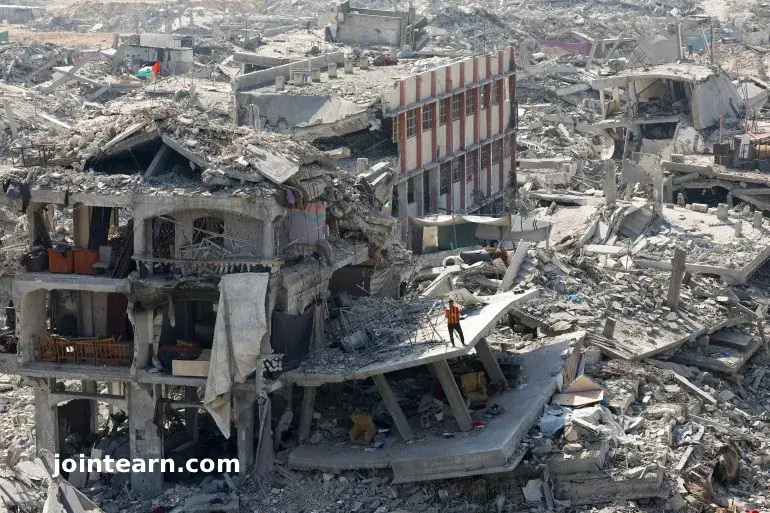
Israel has released five Palestinian prisoners as part of an ongoing ceasefire deal with Hamas, offering a rare moment of relief amid continuing violence and loss in the Gaza Strip. The prisoner release comes at a time when Palestinian families are mourning not only detainees but also those killed in the conflict, with hundreds of bodies being handed over by Israel in recent days.
Prisoners Freed Under Ceasefire Deal Welcomed by Families
On Monday evening, five Palestinian prisoners were released and transferred to Al-Aqsa Hospital in Deir el-Balah, in the central Gaza Strip, for medical evaluation, according to Al Jazeera’s correspondent, Hind Khoudary. Relatives waited anxiously for updates, with some joyfully welcoming their family members back after long periods of separation, while others searched hospital lists, desperate for news about missing loved ones.
“This is the first time since the ceasefire began that Israel has released Palestinian prisoners whose identities had not previously been disclosed,” Khoudary said, highlighting the emotional significance of their return.
Thousands of Palestinians continue to languish in Israeli prisons, many under administrative detention—a policy that allows indefinite imprisonment without formal charges or trials. Human rights organizations have frequently criticized this practice as a violation of international law.
Gaza’s Health Ministry: Dozens of Palestinian Bodies Returned in Severe Condition
Earlier Monday, Gaza’s Ministry of Health confirmed that it had received the remains of 45 additional Palestinians from Israel via the International Committee of the Red Cross (ICRC). This brings the total number of bodies returned under the ceasefire agreement to 270.
Forensic experts have so far identified 78 of the bodies and continue to examine the rest. The ministry said the process is being conducted “in accordance with established medical protocols” to ensure proper identification before families are notified.
Shocking details have emerged over the condition of many of the bodies. Rights groups and Palestinian officials reveal that several of the deceased showed signs of torture and mistreatment: bound wrists, blindfolds, and severe facial injuries were observed on many. Disturbingly, many were returned without identification tags, hindering efforts to reunite families with their loved ones.
The return of bodies is part of a larger prisoner and remains exchange agreement negotiated with mediation from Turkey, Egypt, and Qatar, along with the involvement of the United States. This exchange is a major component of the ceasefire that began on October 10, 2025, following months of intense fighting between Israel and Palestinian armed groups.
Ceasefire Under Threat Amid Ongoing Israeli Attacks
Despite the ceasefire, Israeli military actions in Gaza persist. On Monday, three Palestinians were reportedly killed by Israeli fire north of Rafah, a source at Nasser Medical Complex told Al Jazeera Arabic. The Israeli army claimed it had acted in response to individuals crossing what it calls the “yellow line” in southern Gaza—a designated observation zone under Israeli control.
The Israeli account could not be independently verified, and it remains unclear whether this incident aligns with the reported deaths.
In northern Gaza, a child was among three individuals wounded by Israeli forces, according to medical sources at al-Ahli Arab Hospital. Residents report that Israeli drone activity has continued, with quadcopters dropping grenades on partially destroyed buildings in Gaza City—actions Gazan authorities have denounced as clear violations of the ceasefire terms.
The Gaza Government Media Office has accused Israel of committing more than 125 ceasefire violations since the truce was agreed, warning that continued attacks could trigger a return to full-scale conflict.
Conclusion: Hope and Uncertainty as Gaza Waits for Peace
The release of Palestinian prisoners and the return of bodies under the ceasefire agreement is bittersweet for many families in Gaza—marked by relief, grief, and fear of further violence. As diplomatic efforts continue in the background, the fragile truce remains at risk, with the continued Israeli military activity casting shadows over prospects for lasting peace.
Leave a Reply